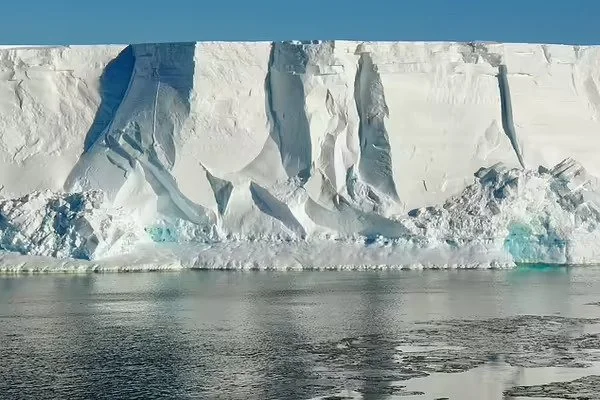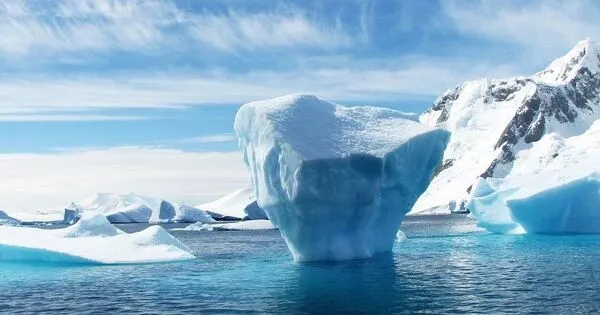A variety of research into the causes of ice shelves and glacier retreat on the frozen continent has improved our understanding of ice loss in Antarctica. Several recent studies have found that rising ocean and atmospheric temperatures are causing significant changes in the Antarctic landscape, ranging from positive feedback processes that cause ice shelves to shrink to updating the amount of ice that has been jettisoned into the ocean.
According to a new model developed by Caltech and JPL researchers, Antarctica’s ice shelves may be melting at a faster rate, which could eventually contribute to faster sea level rise. The model takes into account an often-overlooked narrow ocean current along the Antarctic coast and simulates how rapidly flowing freshwater melted from the ice shelves can trap dense warm ocean water at the base of the ice, warming and melting it even more.
The study, published in the journal Science Advances, was conducted in the laboratory of Andy Thompson, professor of environmental science and engineering.
Ice shelves are outcroppings of the Antarctic ice sheet that can be found where the ice juts out from the land and floats on top of the ocean. The hundreds of meters thick shelves act as a protective buffer for mainland ice, preventing the entire ice sheet from melting and flowing into the ocean (which would dramatically raise global sea levels). However, climate change-induced warming of the atmosphere and oceans accelerates the melting of these ice shelves, threatening their ability to hold back the flow of the ice sheet into the ocean.
Large global climate models don’t include this coastal current because it’s very narrow – only about 20 kilometers wide, whereas most climate models only capture currents 100 kilometers across or larger. As a result, there is a risk that those models will not accurately predict future melt rates.
Mar Flexas
“If this mechanism that we’ve been studying is active in the real world, it may mean that ice shelf melt rates are 20 to 40 percent higher than the predictions in global climate models, which typically cannot simulate these strong currents near the Antarctic coast,” Thompson says.
In this study, led by senior research scientist Mar Flexas, the researchers focused on one area of Antarctica: the West Antarctic Peninsula (WAP). Antarctica is roughly shaped like a disk, except where the WAP protrudes out of the high polar latitudes and into lower, warmer latitudes. It is here that Antarctica sees the most dramatic changes due to climate change. The team has previously deployed autonomous vehicles in this region, and scientists have used data from instrumented elephant seals to measure temperature and salinity in the water and ice.

The team’s model incorporates the Antarctic Coastal Current, which runs counterclockwise around the entire Antarctic continent and is overlooked by many climate models due to its small size.
“Large global climate models don’t include this coastal current because it’s very narrow – only about 20 kilometers wide, whereas most climate models only capture currents 100 kilometers across or larger,” Flexas explains. “As a result, there is a risk that those models will not accurately predict future melt rates.”
The model depicts how freshwater melted from ice at the WAP is carried by the coastal current and transported across the continent. The less dense freshwater moves quickly near the ocean’s surface, trapping relatively warm ocean saltwater against the underside of the ice shelves. This causes the ice shelves to melt from below. Increased meltwater at the WAP can thus propagate climate warming via the Coastal Current, which in turn can accelerate melting at West Antarctic ice shelves thousands of kilometers away from the peninsula. This remote warming mechanism could be one of the reasons why the volume loss from West Antarctic ice shelves has accelerated in recent decades.
“There are aspects of the climate system that we are still discovering,” Thompson says. “As we’ve improved our ability to model interactions between the ocean, ice shelves, and atmosphere, we’ve been able to make more accurate predictions with tighter uncertainty constraints. We may need to revisit some of the predictions of sea level rise in the coming decades or centuries; this is work that we will continue to do.”





